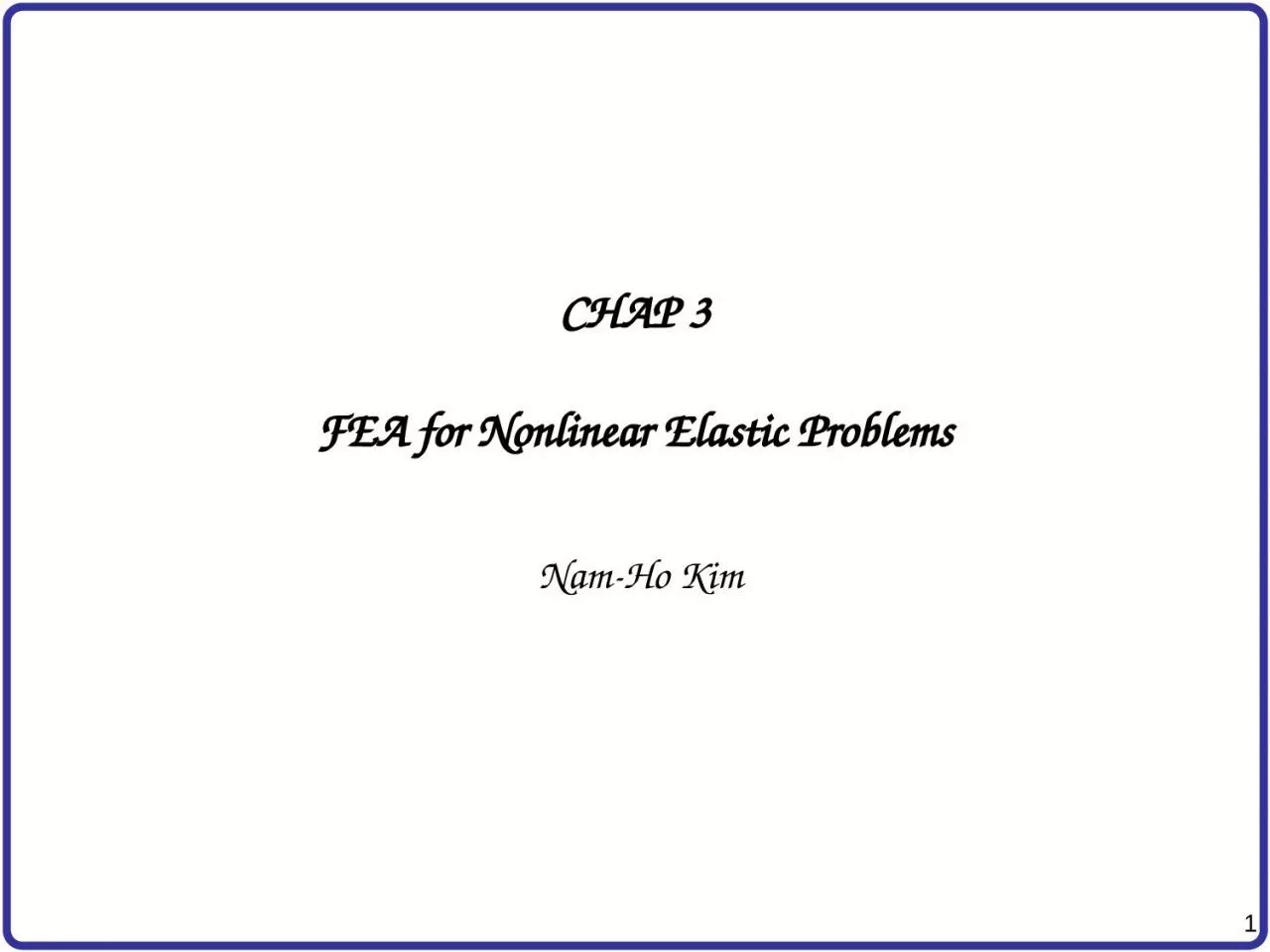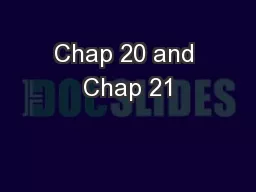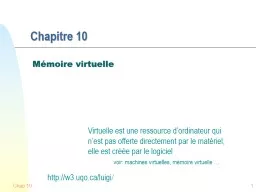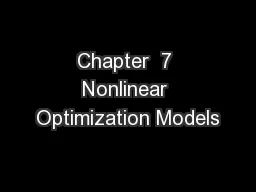PPT-CHAP 3 FEA for Nonlinear Elastic Problems
Author : luna | Published Date : 2023-10-27
NamHo Kim Introduction Linear systems Infinitesimal deformation no significant difference between the deformed and undeformed shapes Stress and strain are defined
Presentation Embed Code
Download Presentation
Download Presentation The PPT/PDF document "CHAP 3 FEA for Nonlinear Elastic Problem..." is the property of its rightful owner. Permission is granted to download and print the materials on this website for personal, non-commercial use only, and to display it on your personal computer provided you do not modify the materials and that you retain all copyright notices contained in the materials. By downloading content from our website, you accept the terms of this agreement.
CHAP 3 FEA for Nonlinear Elastic Problems: Transcript
Download Rules Of Document
"CHAP 3 FEA for Nonlinear Elastic Problems"The content belongs to its owner. You may download and print it for personal use, without modification, and keep all copyright notices. By downloading, you agree to these terms.
Related Documents














![EFG@AHI�JKLMNOP�MQKORP�LSJTNPI�JUVWXYZZZI�[FBA@TWA\I�]U^_\A@@�LU`a\FEA](https://thumbs.docslides.com/829757/efg-ahi-jklmnop-mqkorp-lsjtnpi-juvwxyzzzi-fba-twa-i-u-a-lu-a-fea.jpg)